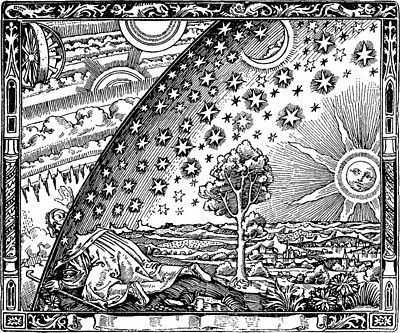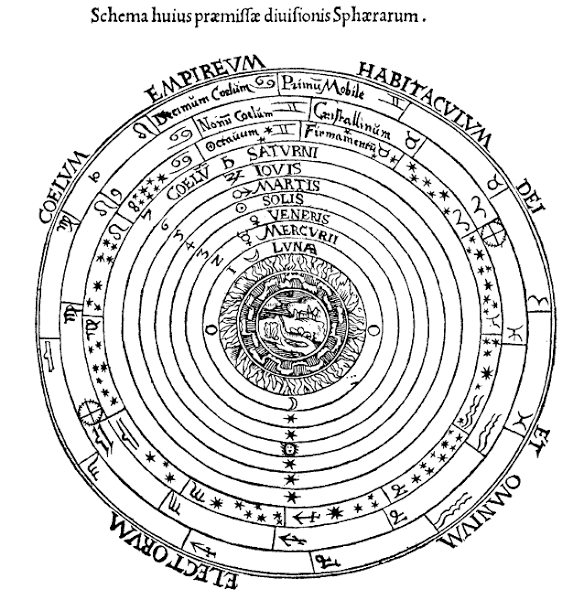 A few days ago I was driving with my 6-year old grandson and we could see the moon in the sky. It was late afternoon, and the moon was somewhat behind the car. When I made a turn the moon was still visible behind us, but now from the other side of the car. My grandson, who is beginning to transition from Piaget’s pre-operational to concrete-operational thinking, and whose worldview is still embedded in the belief that his immediate perceptions accurately reflect reality, concluded that this perceptual phenomenon could only mean one thing: the moon must be following us.
A few days ago I was driving with my 6-year old grandson and we could see the moon in the sky. It was late afternoon, and the moon was somewhat behind the car. When I made a turn the moon was still visible behind us, but now from the other side of the car. My grandson, who is beginning to transition from Piaget’s pre-operational to concrete-operational thinking, and whose worldview is still embedded in the belief that his immediate perceptions accurately reflect reality, concluded that this perceptual phenomenon could only mean one thing: the moon must be following us.
If we had been living in a society that knew nothing of science, with nobody to tell him any differently about the behavior of moon and sun and stars, who’s to say what impressions he would have carried with him into adulthood about the way the universe operates. Without adults around who have transcended pre-operational thinking, without people to explain things to him until he develops a more accurate worldview, would he grow into adulthood without ever maturing any further in his beliefs? Very likely his adult view of the world would be every bit as simplistic as the viewpoint he had in childhood.
Now imagine humanity’s view of the universe 50,000 years ago, before we developed mathematics, before we had instruments like microscopes or telescopes or electronics for observing and measuring beyond what could be seen with our naked eyes, before we established any scientific methodology or principles for the rigorous study of natural phenomenon, before we had science journals to record the findings of other scientists and communicate those findings around the world to be replicated and verified and confirmed or rejected, in a time when all knowledge had as its starting point, as its most basic foundation, whatever our local priest/elder/witch-doctor/shaman told us about the gods and our place in the universe.
50,000 years ago? What am I saying, how about 500 years ago, when the Copernican Revolution was just getting underway? How about now for much of the world? It has taken hundreds of millenia for humanity to begin transcending that ancient view of the universe. That worldview was all that was needed for hunter-gatherer and agrarian societies to thrive and prosper, but from the perspective we have now it seems childish. From our modern vantage point it is easy to forget that for the 2 million years of our existence as upright apes with growing intelligence, humanity has spent at least 1,999,500 of those years seeing the universe the way my grandson does.
How must it have been to be on your way back from a hunt or a foraging trip or a raid on a neighboring tribe, carrying your spear in a treacherous world, and realize that the moon is following you home?
Throughout our history we’ve believed the cosmos to be earth-centric. The sun, moon, and stars all rotate around us, so there was little reason to question our perceptions. Heliocentric (sun-centered) models have shown up periodically from time to time since ancient times, but it wasn’t until Copernicus in the 1500s that the idea took root and began to grow into common knowledge. Until then the universe looked like this to us.
Most ancient cosmologies had all the elements one would expect: a flat earth with a dome overhead whose sides met the earth or the ocean, the sun and moon and the five visible planets moving around on their own schedules, and the stars immovably fixed to the dome. If the occasional comet came crashing through, what else could that be but a portent from God Almighty?
The positions of sun and stars told us when winter was coming and when spring was on the way. The sun made a yearly trip back and forth across the dawn horizon from summer to winter solstice, and that was as good an annual calendar as we needed for most of human history. Various civilizations built elaborate structures to keep a close eye on this movement.
Since the celestial bodies told us the seasons for planting and harvest, and foretold of warmth and of winter, what else might they be trying to tell humanity about our individual lives? If most of human history took place when human cultural development was in some sociological equivalent of Piaget’s pre-operational or concrete-operations stages, then the egocentrism that is natural in children at those stages would reflect the outlook of humanity in general in relation to the cosmos. Whatever happened in the sky was trying to tell us something about ourselves.
This view would certainly have been reinforced by any local spiritual tradition. Those entrusted with the task of interpreting messages from the gods were guaranteed power and influence in every society in human history. Ancient Israel had an entire tribe dedicated to the management of the Temple and all the religious rites and rituals associated with Judaism. And since the Old Testament describes both civil and spiritual laws, this group constituted ancient Israel’s political leadership as well as its spiritual leadership. Church-state symbioses like this have been common throughout our history.
The incarnation of Spirit that lived on this earth as the man Jesus made full use of Hebrew law and lore to establish himself as the Messiah foretold by ancient Hebrew seers like Isaiah and sung about in Psalms. If one accepts that Spirit knows very well what the cosmos looks like, how it is really organized and how we really came to be living in these man-ape forms, then one can’t help but notice that Jesus made no effort whatsoever to change anyone’s view in this regard.
When I was making my conversion from young-earth creationist to whatever you call me now, this was something I struggled with a bit. But I finally realized that he was laser-focused on one message only, namely that our conscious minds can connect with God’s and thereby plug ourselves in to the very real power and joy and fearless peace and confidence that this connection brings to human hearts and minds. The term used is “salvation” but that almost seems inadequate sometimes once Spirit becomes active in your life. It’s about so much more than just the afterlife.
Christians believe that God reaches out to everyone. We know that wherever that person is in life, whatever their circumstances and whatever their worldview, whatever their perception of reality, that Spirit can and will use that understanding as the starting point to lead that person to Spirit. Establishing a personal, individual bond with Spirit is what it’s all about, no matter what else a person believes about God or the universe or his place within it.
In modern Cosmology we no longer need to invent myriad pantheons of gods to explain our perception of the motions of stars and planets. We’re developing a pretty good understanding of that on our own. The intensely human experience of Spirit is something we have not yet learned to measure objectively. Spirit active in one’s life is a felt thing, a psychological phenomenon indeed, but as much deeper in function and perceptual understanding as our ancient earth-centered cosmos was from our present knowledge of physics, gravity, time, and distance and the concomitant understanding they give us of our universe.
To love and to believe in love is what it’s all about, and the life-transforming energy that comes from connecting to the source of that power is and always has been the true message of Jesus.

Compelling reading. Great job!!